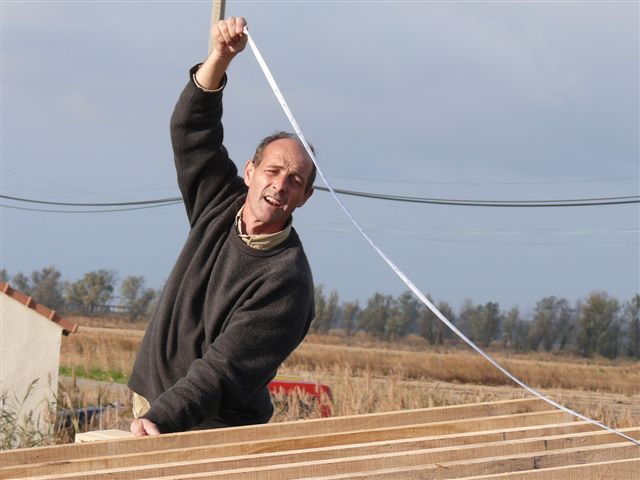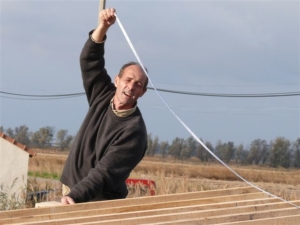 Jean-Yves Mondain-Monval, who lives in Sambuc, has been involved in the Verdier marshes project since it began in 2003. He shares his own personal experience and vision of the project as a “multi-user” of the marshes.
Jean-Yves Mondain-Monval, who lives in Sambuc, has been involved in the Verdier marshes project since it began in 2003. He shares his own personal experience and vision of the project as a “multi-user” of the marshes.
Why did you get involved in the Verdier project?
When the Tour du Valat presented us its multi-activity project to be developed for the inhabitants of the Sambuc, it represented an exceptional opportunity in the Camargue for two reasons. On the one hand, very few places in the Camargue are made available to the inhabitants or else they are only available for one particular use; on the other hand, the conditions for gaining access to this area are particularly attractive.
What contributions have you made to the Verdier project during its 9 years of existence?
My wife and I got involved in this project at the beginning. I was initially attracted by the hunting project, but I have gotten involved in all of the activities proposed in the Marsh area. Perhaps, I have been a bit less involved in the fishing activities, although I did contribute to writing the fishing regulations for children.
What do you think about the activities proposed, the involvement of the various stakeholders (inhabitants – members – land owners), and the management model being applied?
I think the ‘multi-management’ approach is valuable, even if in reality I have noticed that most people limit themselves to a single activity. For example, those who wanted to develop hunting activities generally stay in the hunting group, those who were in favour of grazing activities in the grazing group, and so on.
This is why it is essential for there to be a leader, as much at the beginning to get the ball rolling in the right direction, as subsequently to supervise the project and bring all the users and members together for fundamental activities like building infrastructure and the traditional marsh meal. In addition, the leader’s legitimacy enables him or her to remind others about who owns the site and to prevent one group from dominating the others.
Nine years down the road, let’s try to get a bit of perspective… If you had to advise other stakeholders for a similar project, what would you tell them?
The interest of the Verdier project is that the multiple uses developed correspond to the site’s ecological issues. Nonetheless, such a project must take account of the overall situation. In the case of Verdier, the choice of developing multiple uses took on all its interest due to the fact that the site is close to a village, which favours the involvement of people from the village. Finally, as I mentioned earlier, the group leader has an essential role to play to make the project successful. It is also a good idea to remind everyone of their rights (or to state them more clearly, for we have perhaps fallen short on this point), but also their duties so that the association is not only driven forward by its leader and a few highly committed volunteers.
What are your proposals for the future?
The project is working well, but I think it would be even more successful if we could get members involved in common issues, which go beyond the activities of a certain group.
To conclude, I would like to insist that this project has really improved the quality of life in the village. This is still true today, even if the enthusiasm of the first years has fallen off a bit due to the daily routine. We can say that this is simply a normal phenomenon, because the users have completely made the site their own: it is an integral part of their daily lives and landscape. When I remember what Verdier was before and what it has become thanks to this joint management project, it would be hard for me to imagine what it would be like if it were not here today.
It is up to us to make sure that people do not forget about it!
